
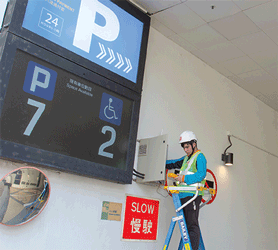


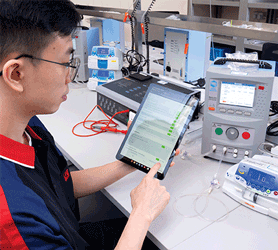

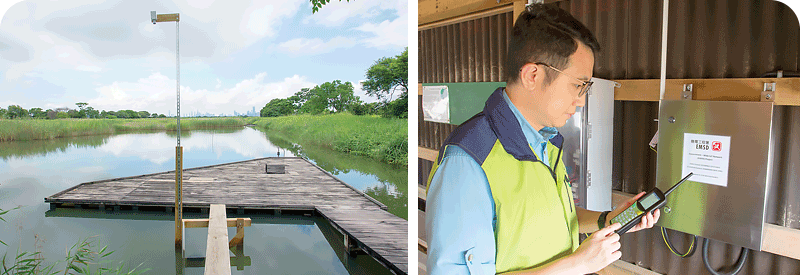
The EMSD staff set up a Government-Wide Internet of Things Network (GWIN) gateway (right) in the Mai Po Nature Reserve to provide GWIN coverage, allowing the World Wide Fund for Nature Hong Kong to receive data remotely from sensors installed in the reserve, and thus monitoring the water level and quality of the freshwater ponds.
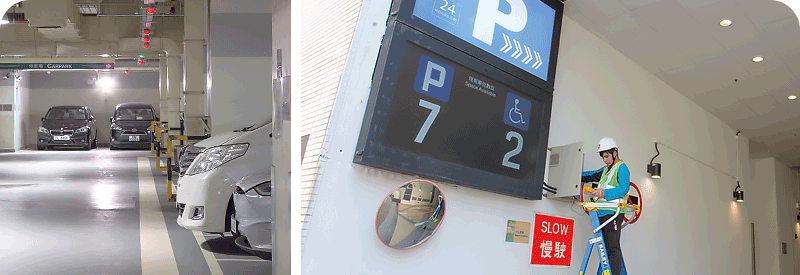
The EMSD installed the Internet of Things-based Car Park Availability System at several government venues, including Tai Po Complex (left) and Island East Sports Centre (right). The system shows the occupancy status of individual parking spaces with red and green bicolour lights, and provides real-time information on available parking spaces with a display panel at the entrance.
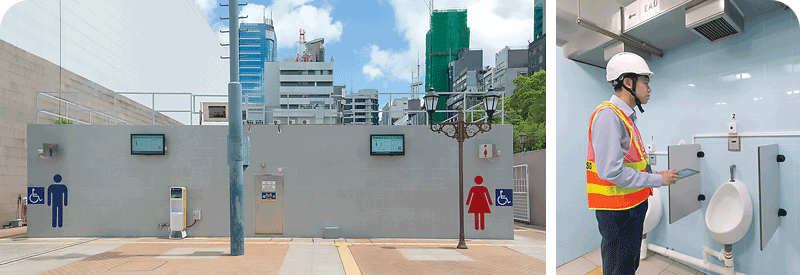
We installed the smart toilet system at public toilets in the Kowloon Park to collect various types of data including usage of toilets and consumables. Information such as the number of cubicles available and nearby public toilets are displayed outside the toilets to improve public service standards.
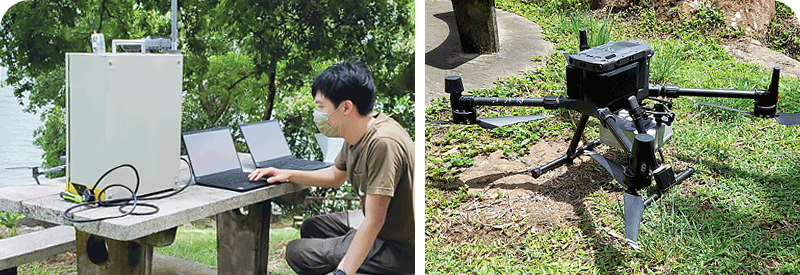
By utilising the GWIN-on-Drone, which worked with positioning tracking devices, our team tracked the locations of Mountain Search and Rescue Team members in real time during their training. This location tracking system is specifically designed to assist search and rescue personnel in locating the injured or missing individuals effectively for operations in remote areas.

The new Biomedical Engineering Services e-form platform, which was not only linked to maintenance manuals and built-in checklists but also compatible with mobile devices, enables our staff to complete forms for repair and maintenance of medical equipment more easily, quickly and accurately than using paper forms, significantly enhancing work efficiency and service quality.
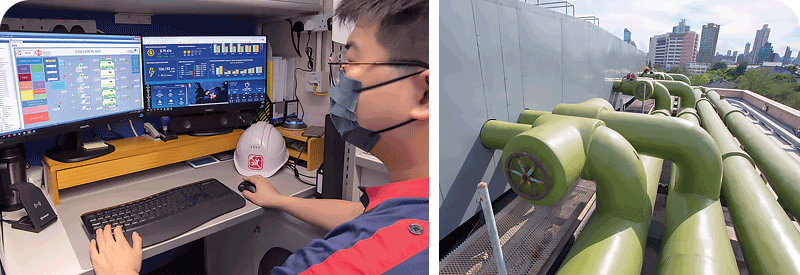
To achieve better energy efficiency and conservation, we applied artificial intelligence for chiller plant optimisation at the Hospital Authority Building for analysing and adjusting the performance of chiller units.